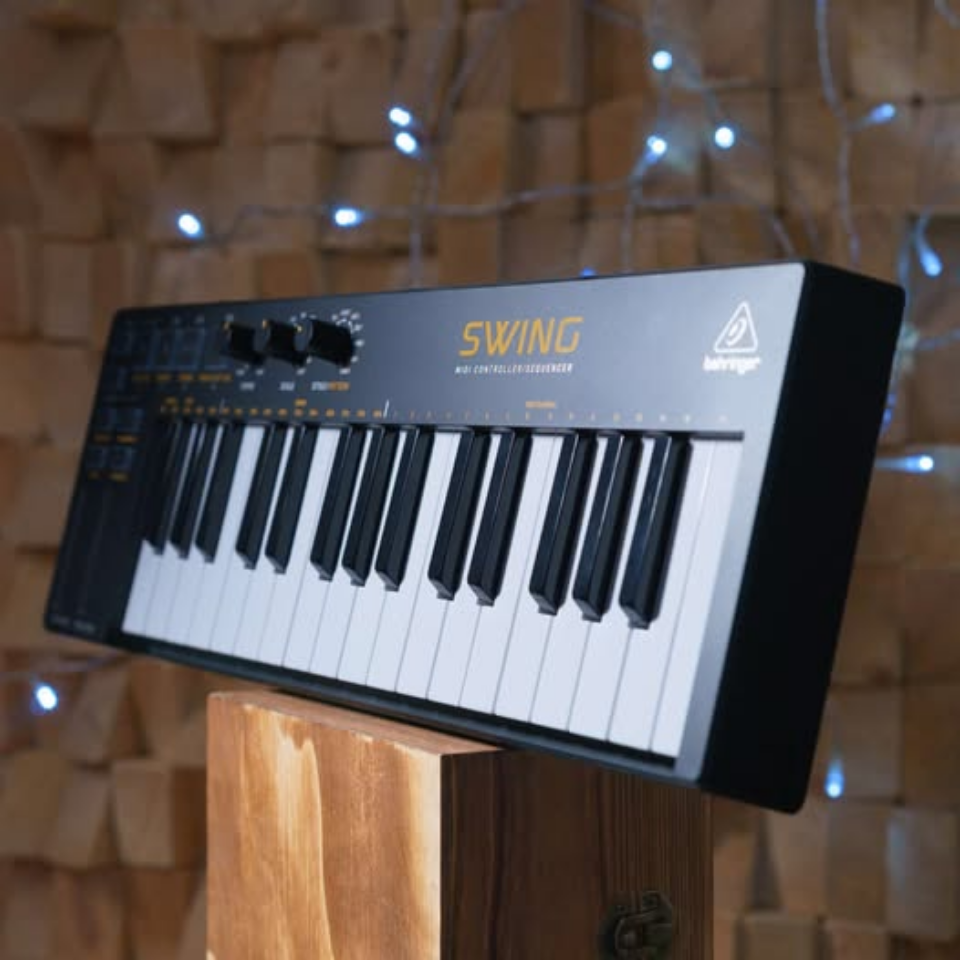Technically, keyboards and synthesizers are designed to serve two completely different needs. Keyboards focus on reproducing existing instrument sounds, while synthesizers are intended for creating and shaping sound from raw waveforms. Understanding the operation of each device is the best way to choose the right tool for your intended use.
Is a Synthesizer Better Than a Keyboard?
It is not accurate to say that a synthesizer is "better" or "worse" than a keyboard, because these instruments serve different purposes. However, in terms of sound design and deep tone customization, synthesizers are significantly more powerful.
Strengths of a Synthesizer
- Create and shape sounds from scratch using components such as oscillators, filters, LFOs, and envelopes.
- Deep customization: Allows you to craft unique sounds exactly the way you want.
- Powerful built-in effects: Reverb, delay, modulation, distortion and more to expand creative possibilities.
A Synthesizer Is Ideal For:
- Electronic music producers
- Sound designers for games or films
- Anyone who wants to create unique, unconventional sounds
Who Should Use a Keyboard?

A traditional keyboard focuses on simplicity and convenience:
- Comes with a wide range of built-in presets: piano, strings, organ, brass, pad, etc.
- Easy to play and control, suitable for beginners
- Some models include arranger features (auto accompaniment) for live performance
A keyboard is suitable for:
- Beginners learning music
- Performing musicians who need many built-in sounds
- Music classes, churches, and acoustic bands
Conclusion
A synthesizer is better if you want to craft and design sounds. A keyboard is better if you prefer simplicity, quick access, and a variety of ready-to-use tones.
Can You Use a Synthesizer Like a Keyboard?
The answer is yes, but with some limitations:
- Most synthesizers have built-in keyboards
- You can play melodies just like a basic keyboard
- MIDI output allows control of software instruments or other devices
- However, synthesizers are not designed to realistically emulate acoustic instruments like piano, violin, or guitar
- Piano sounds on synths are usually less natural than those on arranger keyboards or digital pianos
- Fewer presets compared to keyboards
- No extra features like auto accompaniment, styles, or lesson modes
If your goal is to learn to play or perform with many built-in sounds, a keyboard is the better choice. If sound creation and uniqueness matter more, a synthesizer is the right tool.
Differences Between a Keyboard and a Synthesizer
Below is a technical comparison:
Sound Generation
- Keyboard: Uses pre-recorded samples of real instruments. Limited editing options.
- Synthesizer: Generates sound from basic waveforms such as sine, saw, square, and Triangle, using oscillators, filters, envelopes, and modulation.
Customization Capability
- Keyboard: Basic control of volume, reverb, and light EQ.
- Synthesizer: Deep control of every parameter — attack, decay, cutoff, resonance, modulation routing, and more.
Intended Usage
- Keyboard: Live playing, learning, and performing in multiple music styles.
- Synthesizer: Sound creation, electronic music, and sound design.
Sound Characteristics
- Keyboard: More realistic piano, organ, and string sounds.
- Synthesizer: Electronic tones with unique timbres not tied to acoustic instruments.
Where to Buy?
If you are looking for a reliable place to experience synthesizers or keyboards, Hoàng Bảo Khoa is an excellent choice, offering:
- Genuine products
- Technical consulting from experienced experts
- Hands-on experience with various models
- Solutions for studios, performances, or learning needs
You can get advice on:
- Choosing a synth for sound design (analog, digital, wavetable, FM, etc.)
- Choosing a keyboard for learning, live performance, or stage use
- MIDI setup, audio interface connection, and studio monitors
Final Conclusion
Keyboards and synthesizers are both powerful instruments but built for different goals. Keyboards are simple, versatile, and ideal for general music playing. Synthesizers excel in sound design and waveform-based creation, making them perfect for creative production and modern music.
DEEPMIND 6X Analog Synthesizers...
1,034
True Analog 6-Voice Polyphonic Synthesizer with 4 FX Engines, 2 OSCs and LFOs per Voice, 3 ADSR Generators, 8-Channel Modulation Matrix, 32-Step Control Sequencer and Tablet Remote Control
4 simultaneous world-class TC Electronic and Klark Teknik FX with over 30 algorithms including Reverb, Chorus, Flanger, Phaser, Delay and Multi-Band Distortion
6 voices with 2 analog OSCs per voice with oscillator sync mode
2 LFOs per voice with 7 waveform shapes, key sync, MIDI sync and envelope auto-triggering